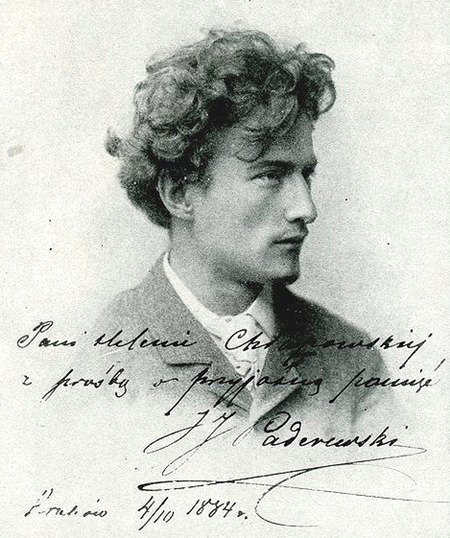
If you happen to be Polish, you’ll be aware that 11th November is Poland’s National Independence Day. By the end of the eighteenth century Poland had been divided up between Austria, Prussia and Russia and subsequently disappeared off the map of Europe. Over the years, the Poles struggled to keep their identity despite the fact that in the Russian district they were not even allowed to speak their own language. Polish independence is closely connected with the end of the World War I and was officially announced in 1918 though their troubles were far from over.
“So what’s all this got to do with music?” I hear you muttering. Well, the reason is that in 1919 the first Prime Minister of independent Poland was a musician. He was also the Minister of Foreign Affairs and Poland’s representative to the League of Nations. I refer of course, to the charismatic Ignacy Jan Paderewski who was a successful composer and a brilliant pianist. The previous years had seen him give concerts throughout Europe and over a hundred concerts in both the USA and Canada.
During the First World War, with the help of US President Wilson and Herbert Hoover, he raised millions of dollars of American aid for Polish war casualties. Later, as the representative of Poland he signed the Versailles Treaty which restored Polish sovereignty after more than a hundred and twenty years. However, after ten months of being Prime Minister he abruptly ended his successful political career and returned to music.
Today, Paderewski would be called a superstar. His brilliant playing created a sensation at every concert and his name was synonymous with the highest level of piano virtuosity. He’s one of the few classical composers who are represented on the Hollywood Walk of Fame. Incidentally, it was Paderewski who said, “If I miss one day of practice, I notice it. If I miss two days, the critics notice it. If I miss three days, the audience notices it.”
Paderewski composed this sparkling concerto in his apartment in Vienna when he was about twenty-eight. It was 1888, the same year as his triumphant debuts in Vienna, Paris and London. It’s an exuberant work influenced by the music of Liszt and Saint-Saëns and remarkably mature, showing a wealth of melodic imagination. When Paderewski was in Paris, he took the completed score to Camille Saint-Saëns for an expert opinion. The older composer was evidently enthusiastic.
After a lively and virtuosic opening movement, there’s a gentle, lyrical slow movement with ravishing harmonies and it’s not difficult to see why Saint-Saëns was so impressed. Look out for the magic moment in the bustling last movement when the wind instruments play a beautiful hymn-like melody.
I suppose when most people think of Polish music, they think of Chopin. Surprisingly this concerto owes little to Chopin but demonstrates that Paderewski should be heard more often. He really should be considered in the same league as his “big three” compatriots Wieniawski, Szymanowski and Lutos³awski.
We don’t hear much music by Tadeusz Baird either. His parents were Scottish immigrants which is why his surname doesn’t sound especially Polish. From 1977 onwards he was a professor at the Warsaw Academy of Music and was also on the staff of the Berlin Academie der Künste. He wrote music for the cinema and theatre as well as a lot of chamber music and four large symphonies.
You might know the name Colas Breugnon from an overture by Dmitry Kabalevsky. Colas Breugnon is the main character in a 1919 novel by Romain Rolland which described rural life in Burgundy three hundred years ago. Both Kabalevsky and Baird based their music on the novel. The Baird work dates from 1951 and takes the form of a six-movement suite “in the old style” scored for flute and strings. It contains some lovely writing and some wistful and delicate slow movements in which the rich harmonies might remind you of Barber’s Adagio for Strings. The remaining movements are charming and dance-like and make for delightful listening.
Capella Bydgostiensis is one of the leading professional chamber orchestras in Poland and performs a wide range of repertoire from the early Baroque to the most recent works of the twenty-first century.
Oh yes, going back to Paderewski, there’s an interesting wine connection. Just before World War 1, Paderewski bought a 2,000-acre property – Rancho San Ignacio near Paso Robles in the Central Coast area of California. He later planted Zinfandel vines there and when they matured the wine was produced at the nearby York Mountain Winery. It remains one of the best-known wineries between Los Angeles and San Francisco.
 |
 |
 |





